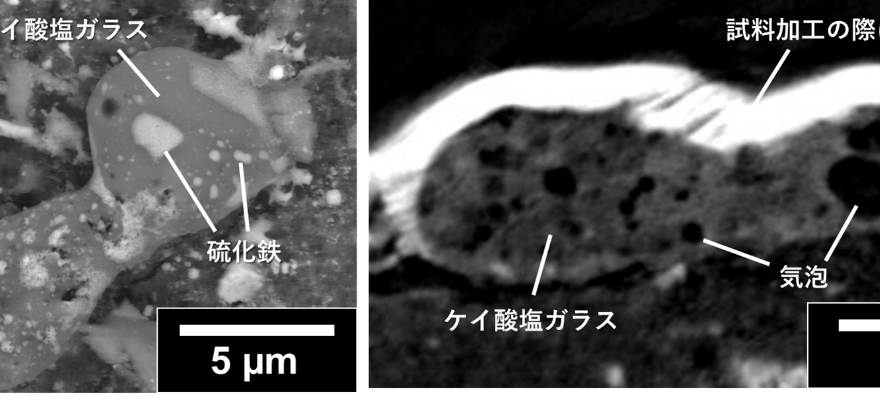[Press Release]
Discovery of Traces of Cometary Dust Impact on Asteroid Ryugu
-Suggests that Cometary Dust Containing Organic Matter Was Supplied from Distant Parts of the Solar System

Joint Press Release
Shogo Tachibana (Professor, Department of Earth and Planetary Science, ISAS)
Since the surface of an asteroid is not covered by an atmosphere, solar winds and cosmic dusts fall on the asteroid and change the chemical composition and other characteristics of materials on the asteroid’s top surface. A research team led by Assistant Professor Megumi Matsumoto and Professor Tomoki Nakamura of the Department of Earth Sciences, Graduate School of Science, Tohoku University, in collaboration with Ritsumeikan University, Kyoto University, the University of Tokyo, and others, observed the surface of rock particles brought back from the asteroid Ryugu by the Hayabusa2 probe using a scanning electron microscope, and found that the surface of the asteroid is covered with molten materials of 5 to 20 micrometers in size, formed when small cosmic dust particles hit the asteroid. The team discovered several melts of 5 to 20 micrometers in size, which were formed by the impact of small cosmic dust particles on the asteroid’s surface. 3D CT observation and chemical composition analysis of the melts revealed that they were formed by the melting and mixing of dust from the impacting comet and Ryugu’s surface material at high temperatures.
Comets form in the distant part of the solar system and are known to contain a large amount of organic matter that could be the material for life. The formation of molten material from cometary dust impacts likely occurred in the orbit of the present-day asteroid Ryugu about 5 million years ago, suggesting that Ryugu was supplied with cometary dust containing organic matter from distant parts of the solar system until very recently.
The results of this study were published on January 19, 2024 in Science Advances, a journal published by the American Association for the Advancement of Science (AAAS).

(Right) CT image of a cross-section of the melt. It can be seen that it contains many bubbles.
For more information, please refer to the following
Graduate School of Science web: https://www.s.u-tokyo.ac.jp/ja/press/10185/
Publication URL: https://www.science.org/doi/10.1126/sciadv.adi7203

